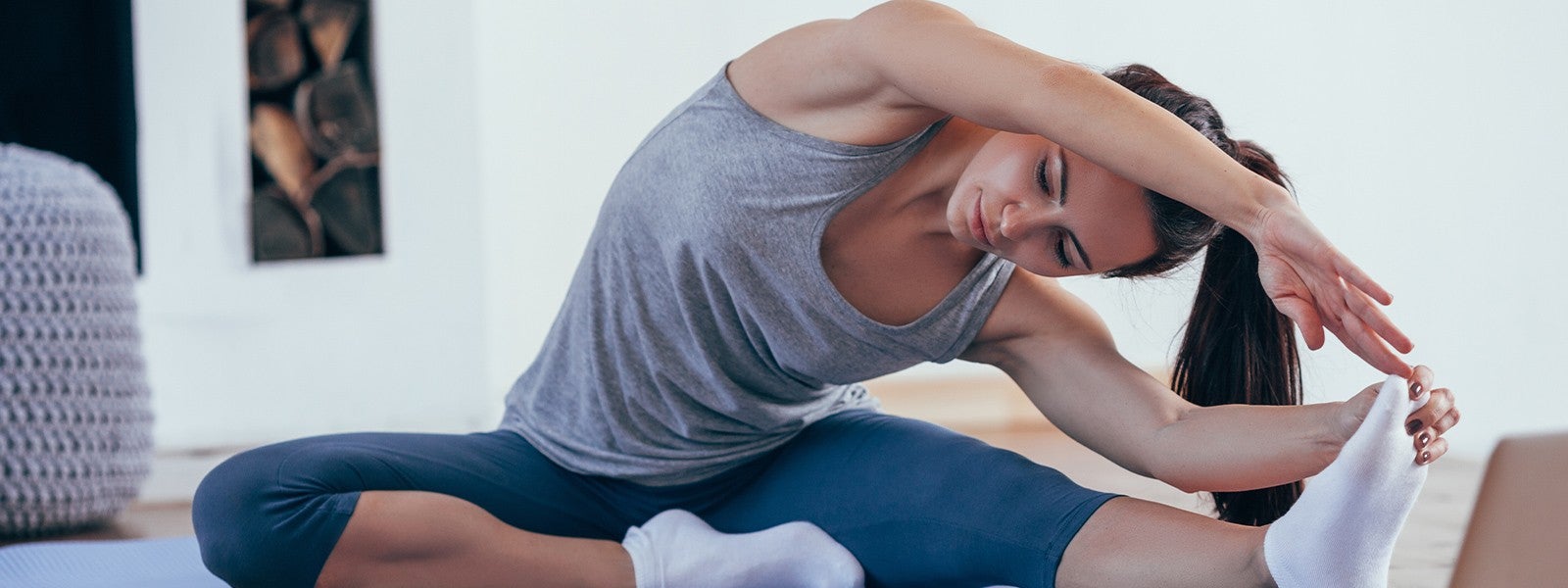
10 Ways to Stretch at Home
Move over, boutique fitness—stretching is having a moment. In the last few years, an entirely new form of business has appeared in the mini-mall. Dedicated stretching studios offering one-on-one stretch sessions are a hybrid of massage places and workout studios. Instagram posts extol the benefits of devices (ropes, balls, massagers, etc.) purported to stretch you better. All of this might make you ask yourself, “Should I be stretching more?” and “What’s the best way to go about it?” Read on to discover how just a few minutes of stretching each day can increase your range of motion, calm your mind, and even improve circulation. And did we mention it feels fantastic?
Why should we stretch? If done well, it’s pleasurable, and the yummy feeling can last even after you’re finished. Animals and babies know this and do it instinctively (also known as pandiculation). In fact, many of the most common stretches such as cat/cow and Downward Dog take their names and inspiration from the animal kingdom. Now that we spend so much time sitting, and never more so than now during COVID-19, stretching is even more important to our well-being. Commuting, working over a screen and even recreational activities such as cycling keep us in a hunched over position. Stretching the spine in the opposite direction counteracts all of that forward-bending.
Not all stretching is created equal. Forget old school stretching: the ballistic, competitive, and over-zealous movements familiar from sports practice. At the other end of the spectrum is a traditional dancer’s stretching, where you get into an extreme position (such as a center split), flop down under the ballet barre and just hang out. Neither of these approaches develop strength or stability, nor do they translate into movement. That is unless you’re in Cirque du Soleil, there’s no benefit to being able to pin your legs behind your head.
When starting a stretching program, avoid random acts of stretching. Perform a self-assessment to become aware of your asymmetries: look in the mirror or better yet, close your eyes and feel. Is one shoulder, hip, or ear higher than the other? Remember that the body part that’s talking to you the loudest might (an achy lower back or a tender neck, for example) might not be the culprit. Your lower back pain, for example, might be caused by tight hip flexors.
The stretches below are a good place to start. They can be performed first thing in the morning, before or after you exercise, or at regular intervals during the workday when you feel your muscles tightening up. As you incorporate stretching into your daily or weekly routine, you should start to see incremental gains in flexibility. You may also experience improved focus that comes from not having to constantly adjust your chair or computer screen in order to get comfortable. Try to hold each position for several breaths, inhaling and exhaling mindfully. And if something hurts, stop.
1. Good Morning Side Stretch
Stand with feet hips distance apart. Raise both arms overhead and grasp your right wrist with your left fingers. Inhale and lengthen the spine and torso. As you exhale, lean to the right side without allowing the left hip to jut out. Return to center and reverse the clasp of the wrist. Repeat on side two.
2. Shoulder stretch
From a seated or standing position, bring one arm across the chest. Using the other arm to grasp the wrist, pull the extended arm closer to your chest. You should feel a stretch across the shoulder and upper back. Repeat on the other side.
3. Neck Stretch
Extend one overhead and bend the elbow to grasp the ear on the opposite side. Looking straight ahead, gently tilt the head towards the opposite shoulder, using the hand to apply gentle pressure. Tilt the nose towards the shoulder and gaze downwards to feel the sensation in a different spot. Repeat on the other side.
4. Upper Back Stretch (Cat/Cow)
From a quadruped (all fours) position, round the spine like an angry cat, bringing the chin towards the chest and tucking the tailbone. Then reverse the curve of the spine, tilting the buttocks towards the sky and looking up (“Cow pose.”).
5. Lower Back Stretch (Child’s Pose)
From an all-fours position with the knees wider than your hips, bring your big toes together, then lower your hips towards your heels. Reach your outstretched hands away from your seat, feeling a stretch along the back body.
6. Hamstring stretch
Sit with your legs extended in front of you. If this is difficult, put a yoga block or folded blanket beneath your seat to prop you up. Reach arms above your head and fold forward, reaching for your toes, shins, or whatever you can reach. Don’t bounce or yank.
7. Hip Flexor stretch (Runner’s Lunge)
From an all-fours position, step your right foot forwards until the knee forms a 90-degree angle, the right foot is flat on the floor and the knee is over the right foot. Place your fingertips on the floor beside your hips, or on yoga blocks or a stack of books if you need more support. Without letting the right knee move in front of the right toes, lower the hips until you feel an opening and stretching in the left front hip (you might have to walk your left knee back a little). Switch sides.
8. Glute Stretch (Figure Four)
From a seated or supine (lying down) position, cross your left ankle over your right knee. Your right knee should be bent, and your right foot should be flat on the floor. Flex the left foot to protect the knee. If lying down, reach behind the right thigh or grasp the right shin and pull the left thigh towards the face. (If seated, bend at the hips, folding toward the left foot.). Repeat on the other side.
9. Back Body Stretch (Downward Dog)
From an all-fours position, walk your hands out in front of your shoulders and slowly straighten your legs. It’s fine to keep a soft bend in the knees. Press all ten fingers and the heels of the hands into the floor and press into all four corners of the feet. As you work on straightening your legs, keep the back of the neck long. You should feel length in the entire spine as well as a stretch in the hamstrings and calves.
10. Spine Twist Supine
Lie on your back, arms at your sides and legs extended. Bend the right knee and pull it towards the chest. Extend your right arm out at shoulder height and use the left hand to apply gentle pressure to the outside of the left knee, bringing it closer to the floor on your left side. Turn your head to the right and gaze at your outstretched hand. Repeat on the other side.
Comments
No comments yet. Be the first!
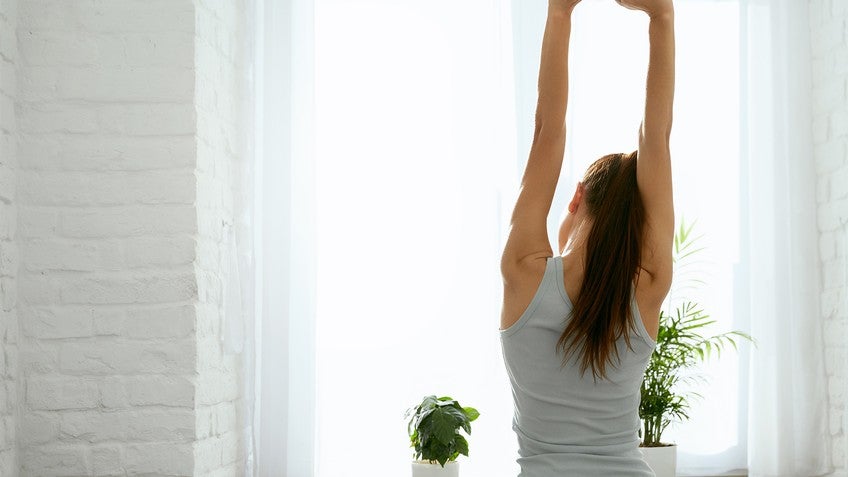
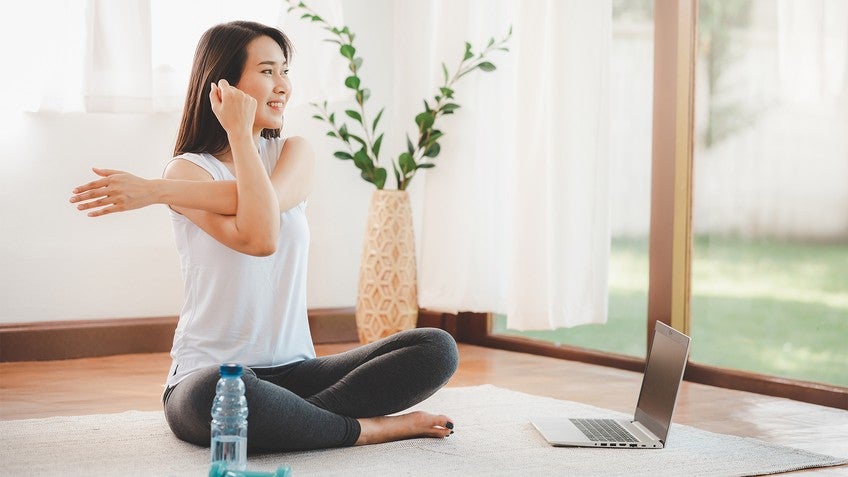
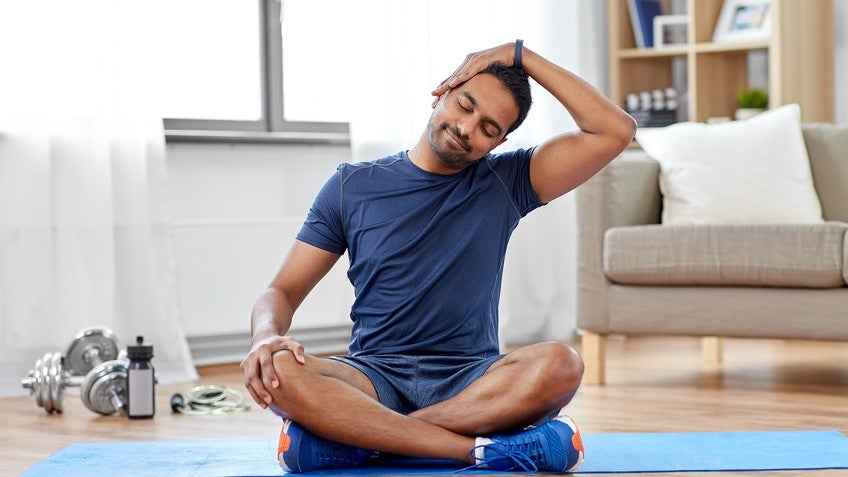
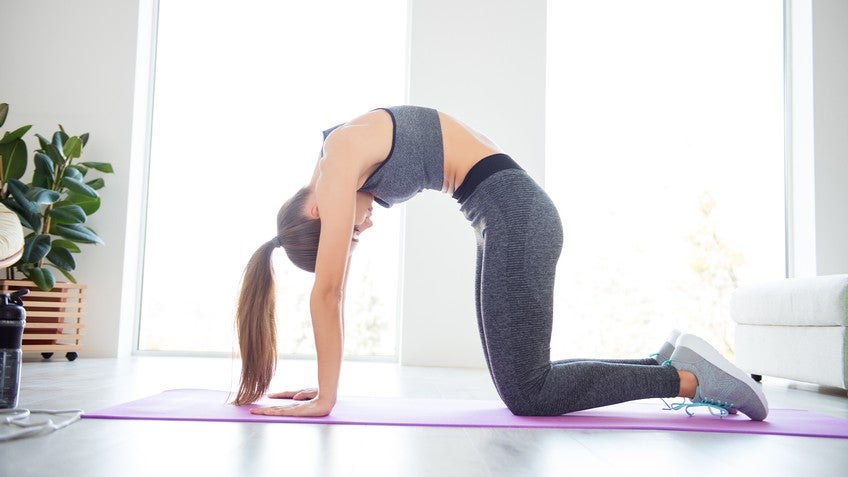

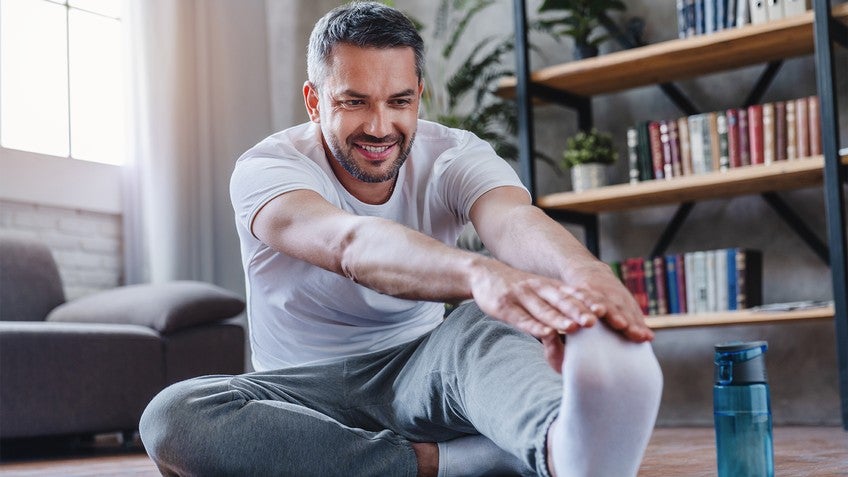
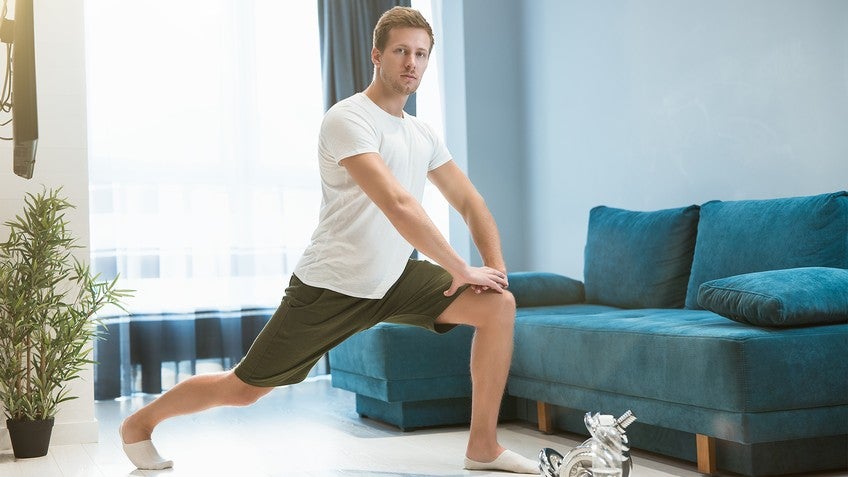
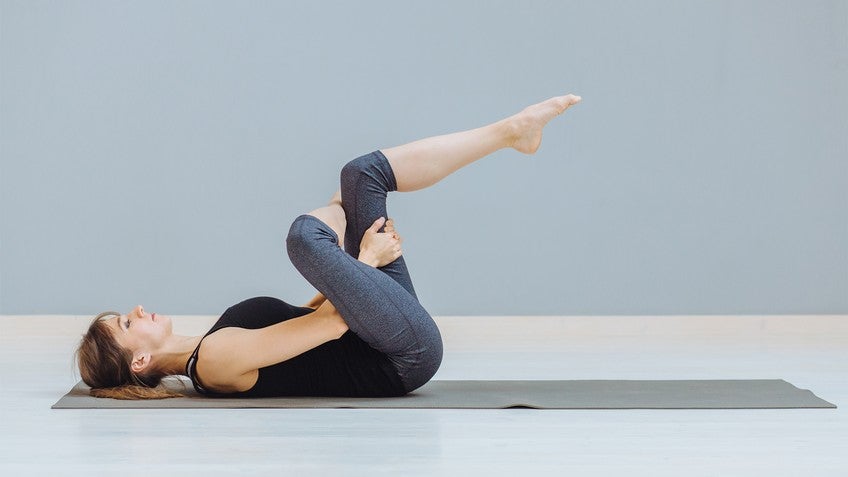
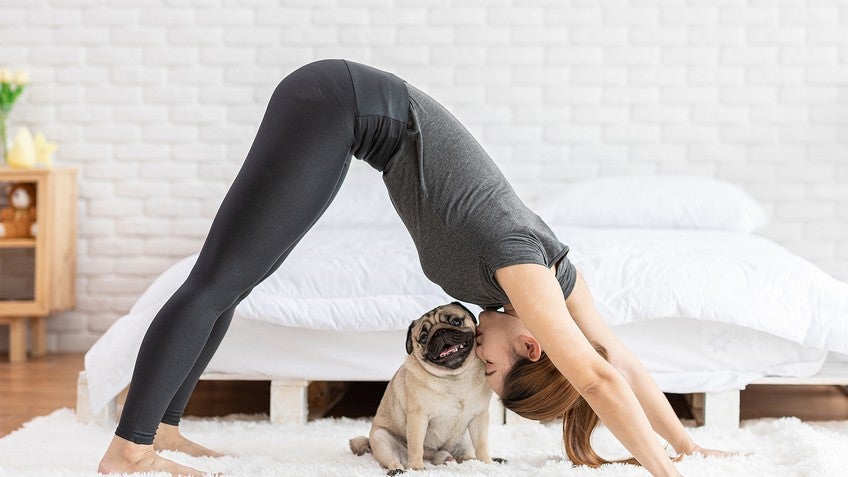
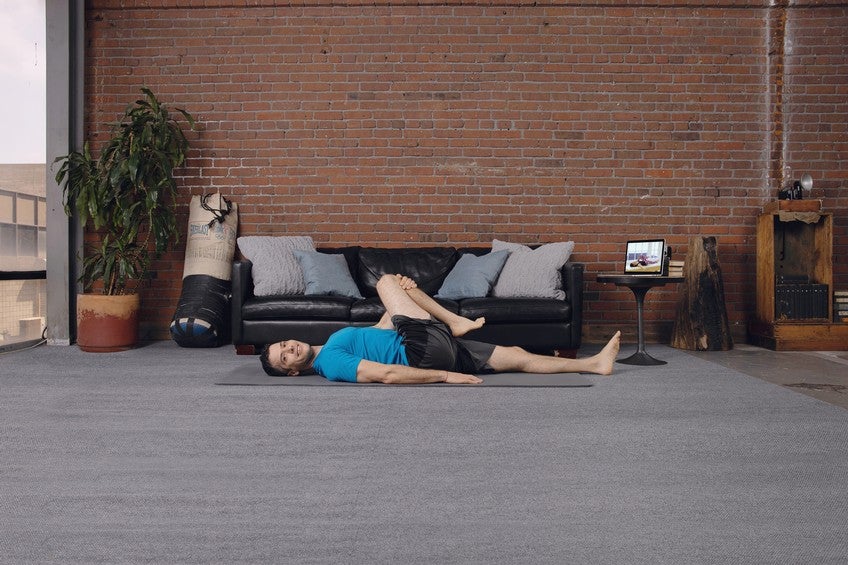




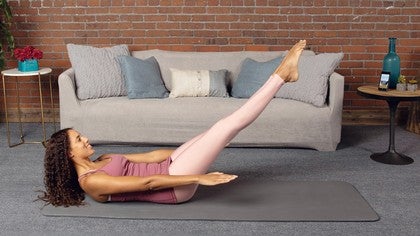
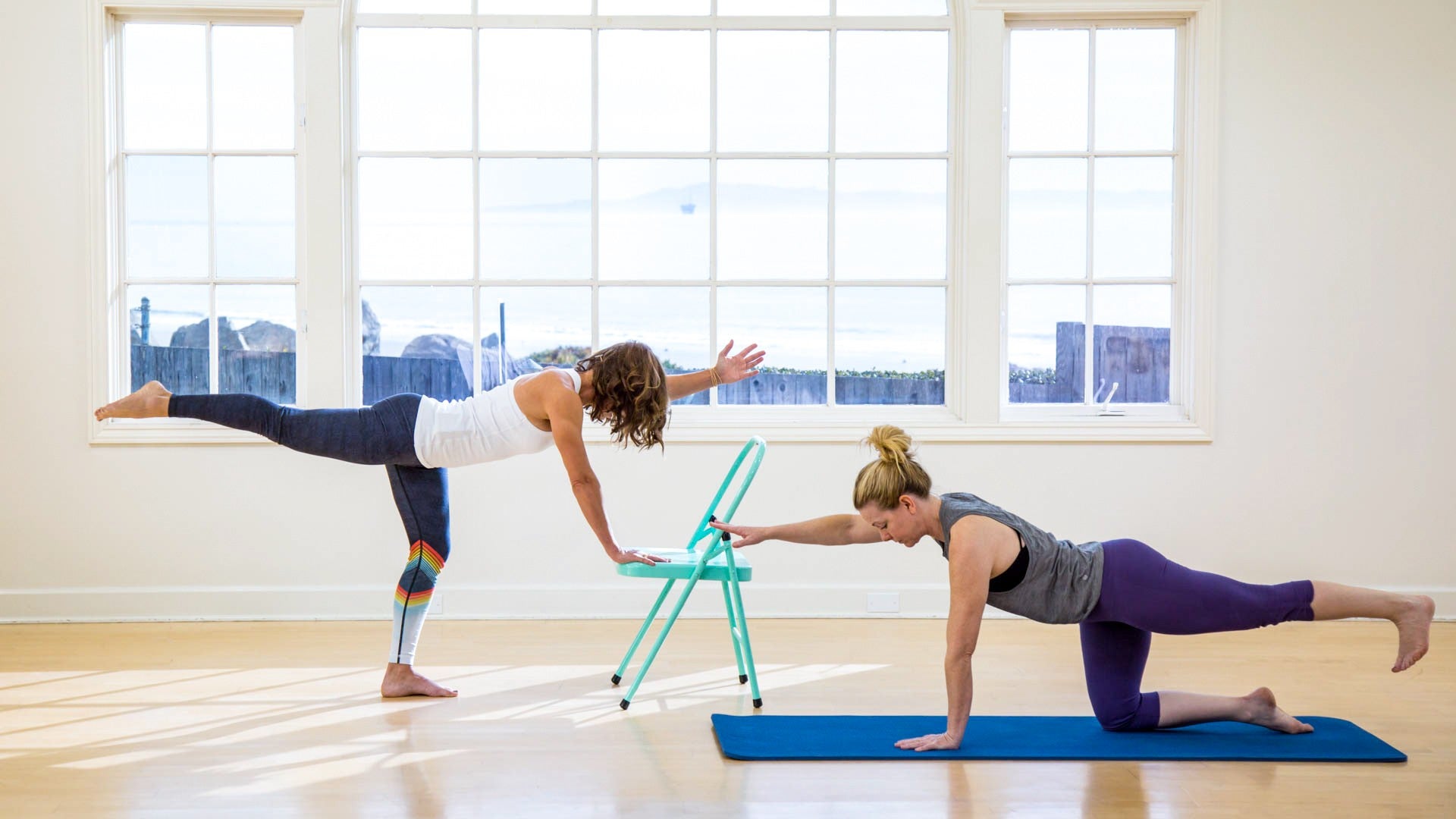

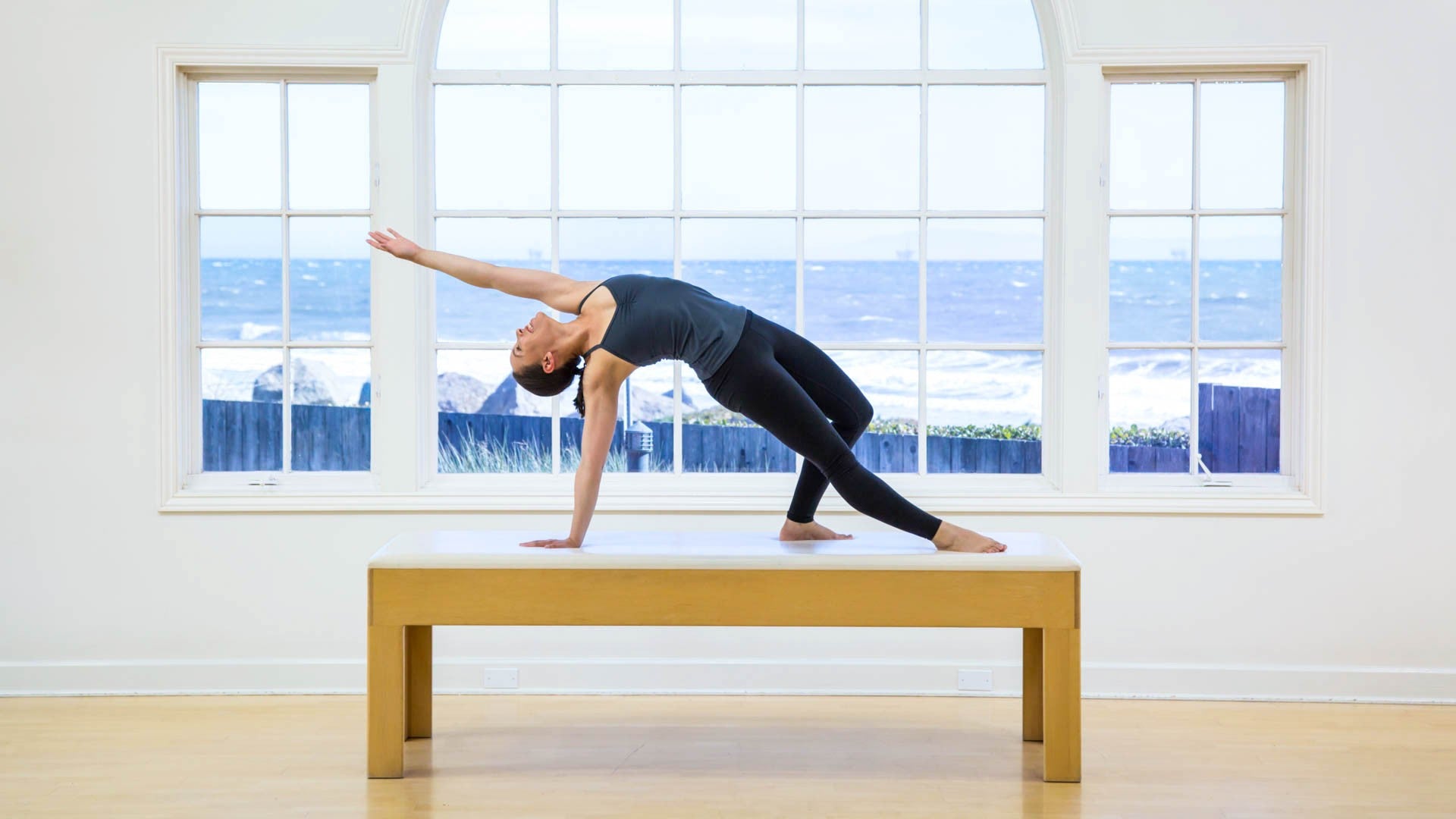
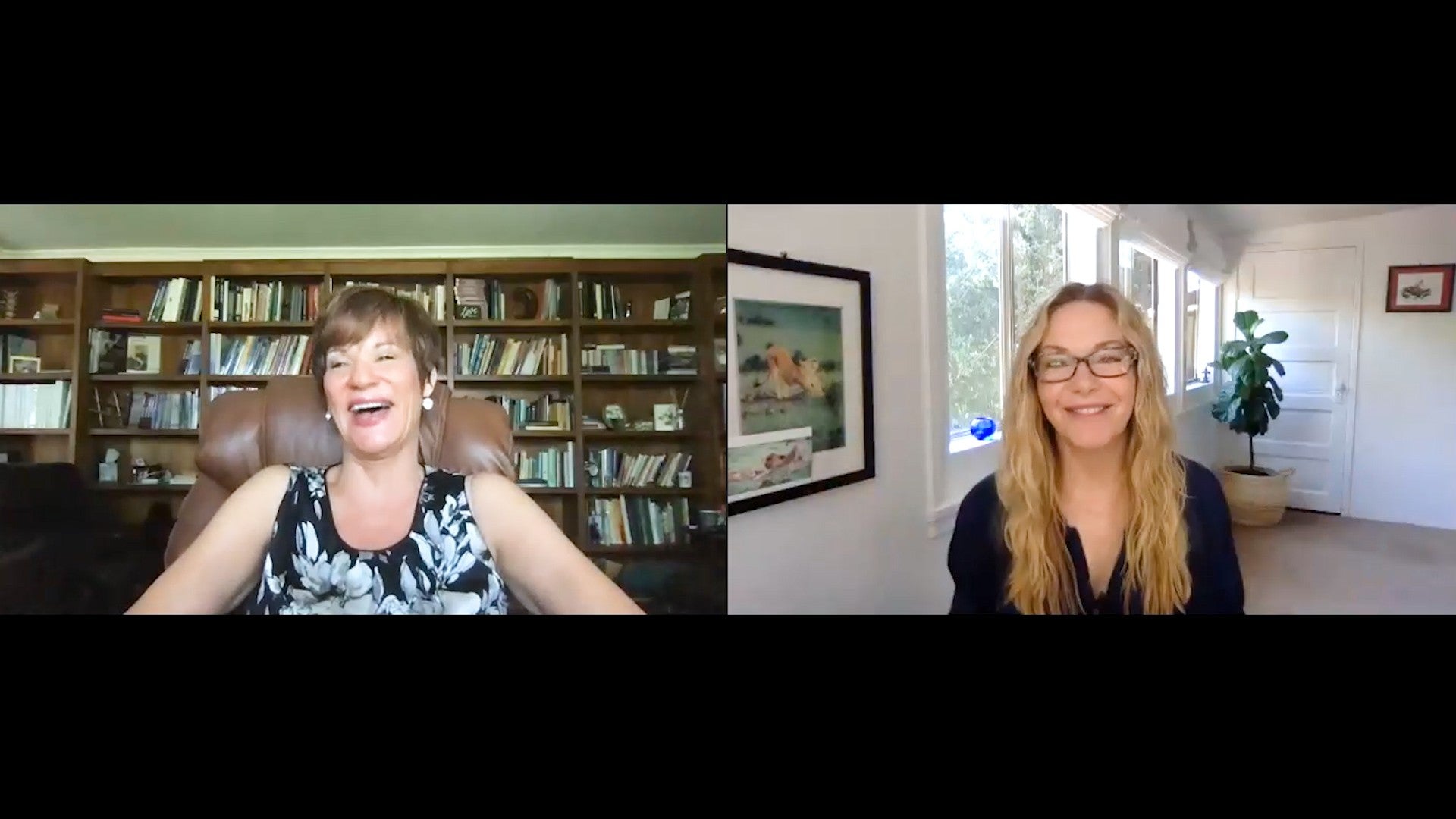

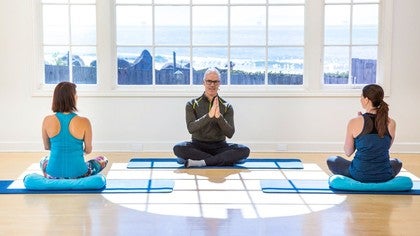

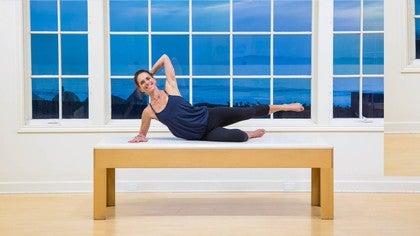
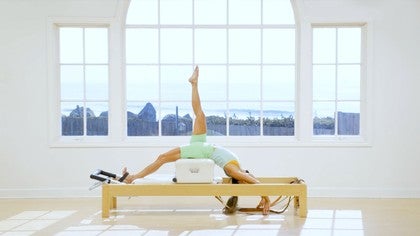






You need to be a subscriber to post a comment.
Please Log In or Create an Account to start your free trial.